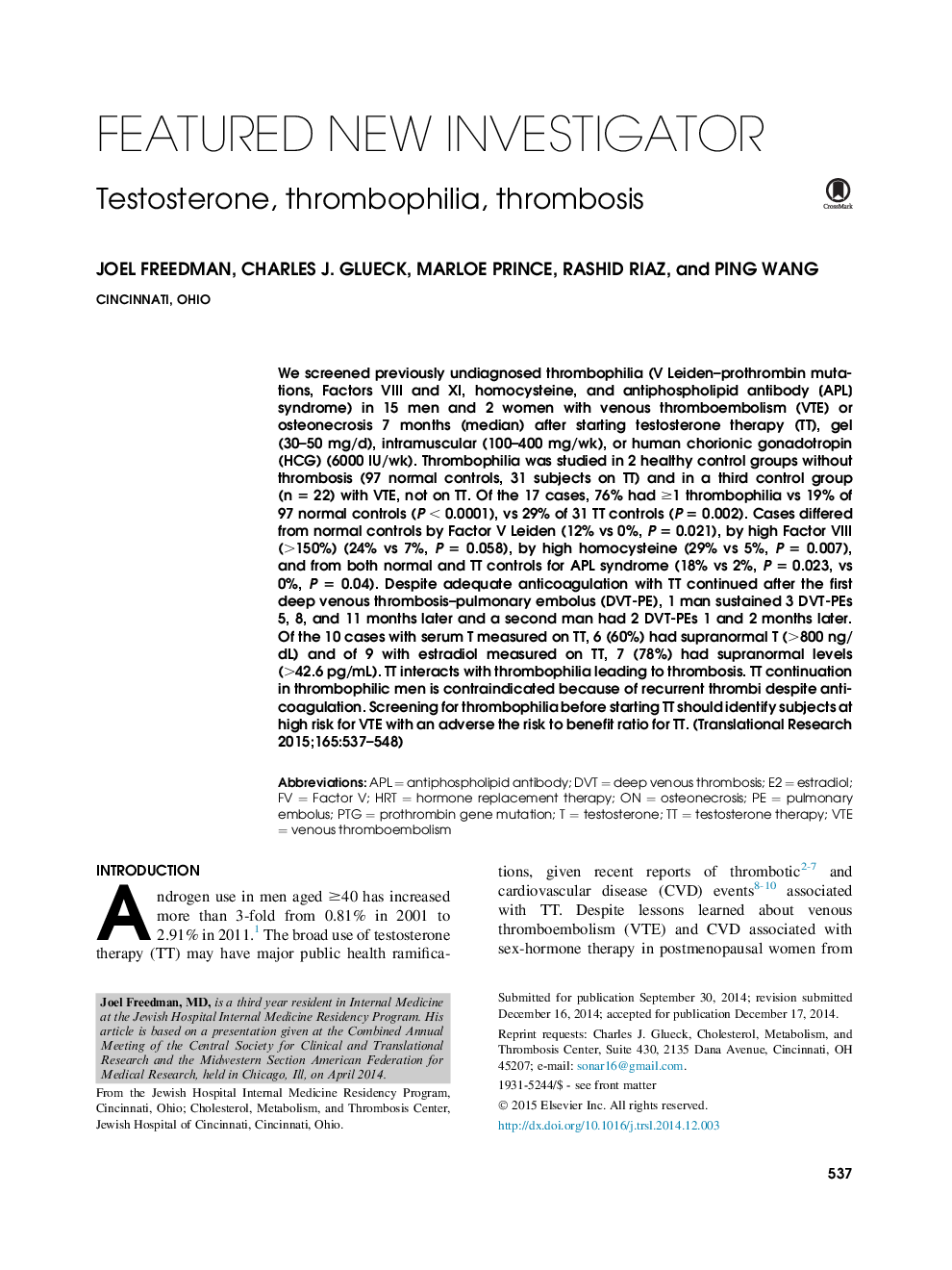| Article ID | Journal | Published Year | Pages | File Type |
|---|---|---|---|---|
| 3840418 | Translational Research | 2015 | 12 Pages |
We screened previously undiagnosed thrombophilia (V Leiden–prothrombin mutations, Factors VIII and XI, homocysteine, and antiphospholipid antibody [APL] syndrome) in 15 men and 2 women with venous thromboembolism (VTE) or osteonecrosis 7 months (median) after starting testosterone therapy (TT), gel (30–50 mg/d), intramuscular (100–400 mg/wk), or human chorionic gonadotropin (HCG) (6000 IU/wk). Thrombophilia was studied in 2 healthy control groups without thrombosis (97 normal controls, 31 subjects on TT) and in a third control group (n = 22) with VTE, not on TT. Of the 17 cases, 76% had ≥1 thrombophilia vs 19% of 97 normal controls (P < 0.0001), vs 29% of 31 TT controls (P = 0.002). Cases differed from normal controls by Factor V Leiden (12% vs 0%, P = 0.021), by high Factor VIII (>150%) (24% vs 7%, P = 0.058), by high homocysteine (29% vs 5%, P = 0.007), and from both normal and TT controls for APL syndrome (18% vs 2%, P = 0.023, vs 0%, P = 0.04). Despite adequate anticoagulation with TT continued after the first deep venous thrombosis–pulmonary embolus (DVT-PE), 1 man sustained 3 DVT-PEs 5, 8, and 11 months later and a second man had 2 DVT-PEs 1 and 2 months later. Of the 10 cases with serum T measured on TT, 6 (60%) had supranormal T (>800 ng/dL) and of 9 with estradiol measured on TT, 7 (78%) had supranormal levels (>42.6 pg/mL). TT interacts with thrombophilia leading to thrombosis. TT continuation in thrombophilic men is contraindicated because of recurrent thrombi despite anticoagulation. Screening for thrombophilia before starting TT should identify subjects at high risk for VTE with an adverse the risk to benefit ratio for TT.
